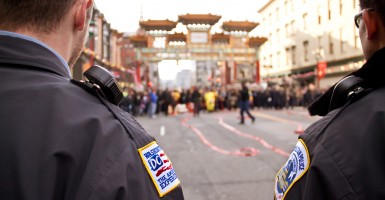In an effort to increase transparency and reduce complaints, the Metropolitan Police Department in Washington, D.C., will issue body-mounted cameras to a test group of officers to record their interactions with the public. The six-month program will begin Oct. 1.
Police Chief Cathy L. Lanier introduced the idea in January and since has discussed the program at two D.C. Council hearings. The test program has garnered support from the D.C. police union, as well as civil liberties advocates.
In Rialto, Calif., the use of force by officers fell by 60 percent in the first year officers were required to wear cameras.
“The most immediate benefit that we anticipate seeing is an overall reduction in the type of behavior that results in complaints,” said Christian J. Klossner, acting executive director of the Office of Police Complaints. “When the cameras are on, both officers and citizens have a more respectful encounter.”
Police departments around the country have been experimenting with similar proposals. In Los Angeles, police have been testing body cameras since January. In New York, more than 60 officers began using them this fall as part of a court order. Chicago police are discussing a similar proposal.
Body cameras for police may seem unorthodox, but using technology to reduce crime has produced encouraging results.
In Rialto, Calif., complaints against officers fell by 88 percent and use of force by officers by 60 percent in the first year officers were required to wear cameras. The same study showed the use of force was twice as likely when officers were not wearing cameras during their shift.
“When you put a camera on a police officer, they tend to behave a little better, follow the rules a little better,” said William R. Farrar, chief of police in Rialto. “And if a citizen knows the officer is wearing a camera, chances are the citizen will behave a little better.”
The Rialto study suggests what psychologists have long known: Humans behave differently when they know they are being watched.
A number of practical question remain to be answered. Should the cameras be on throughout an officer’s tour of duty or for some limited period? If the latter, what should that period be? Should officers turn on the camera only during investigatory stops, or when they are simply engaged in casual conversation? Should they be able to turn off a camera during, say, a lunch break? Should a citizen be able to ask officers not to record an interaction because the citizen fears retaliation?
Then there is the cost. D.C. police not only will need to purchase cameras for every officer, but likely will run up hefty charges to store and maintain video footage. In an era where criminal trials can last for years, police departments and cities would have to store the footage for indictment, trial, and appeal. D.C. has about 4,000 uniformed officers who would need to be fitted for a camera. The Washington Times reported that $2.3 million was withdrawn from the District’s contingency fund to pay for the cameras, and another $800,000 was withdrawn to pay for the servers to store the video.
It also remains to be seen whether camera programs truly will be effective at preventing police misconduct. All officers need to do is turn off the camera before confronting a suspect. Delroy Burton, chairman of the D.C. police union, said when an officer does not turn on the camera, “it lends itself to the accusation of selective recording — that the officer is unilaterally selecting what to record and what not to record.” These issues must be addressed as the Metropolitan Police Department implements the program. But if the results of the Rialto study are any indication, such an initiative could be an important step toward increased transparency and oversight in the criminal system.
When the police are held accountable for their actions and are aware that others are watching, better outcomes will occur. “Sunlight,” as U.S. Supreme Court Justice Louis Brandeis noted, remains “the best disinfectant.”































